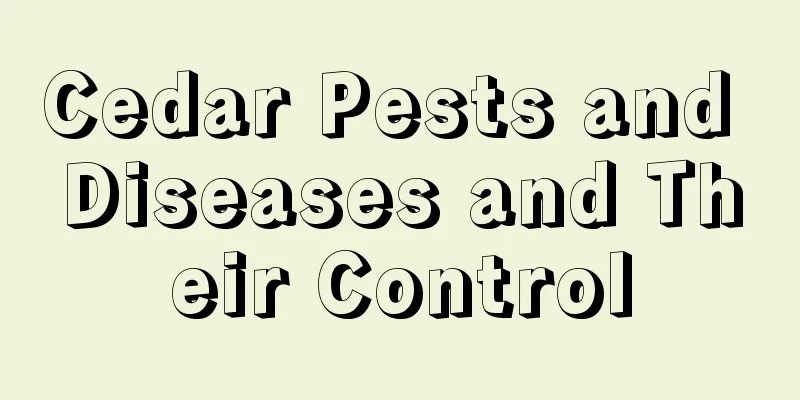Cedar Pests and Diseases and Their Control

Diseases of cedar and their prevention and treatmentBotrytis cinereaThe disease mainly harms the current year's young shoots and two-year-old twigs of cedar, and can be divided into three types: young shoot dieback type, ulcer type and twig dieback type. The prevention and treatment methods are as follows: 1. Cedar is suitable for planting in places with good drainage, ventilation and sufficient light. Avoid planting too densely. 2. Prune and destroy diseased branches in time. 3. When the disease occurs, it is necessary to spray chemical agents such as 1000 times diluted benomyl wettable powder in time for effective prevention and control. Leaf blightForest drought, poor soil, pests and diseases, and improper management may all contribute to the occurrence of leaf blight. The prevention and control measures are as follows: 1. Strengthen management and enhance the disease resistance of cedar. 2. Remove diseased leaves as much as possible to reduce the source of infection. 3. After the ascospores mature, spray 0.3-0.5 degrees Baume lime sulfur mixture, or 65% wettable 3x solution and other chemical agents for prevention and control. It needs to be sprayed 2-3 times, once every 10-15 days. Root rotOccurs in cedar roots, especially new roots. The initial lesions are light brown, then gradually turn into dark brown and black brown, and the cortical tissue undergoes water-soaked necrosis. When the disease is severe, the needles fall off and the entire plant dies. The prevention and treatment methods are as follows: 1. Improve cultivation techniques and strengthen management. 2. When the disease occurs, water the roots with pesticides such as ethylene phosphine aluminum, ridomycin, and dichlorvos. Cedar Pests and Their ControlThe pests of cedar include red wax scale and scale insects. The following are some general measures that can be taken: 1. During the winter, spray 3-5 degrees Baume lime mixture on the branches and trunks. 2. The plants need to be properly pruned in winter and summer, dense and insect-infested branches need to be removed, and ventilation and light transmission need to be enhanced to inhibit insect development. 3. When insect pests occur, spray corresponding chemical agents for prevention and control. |
<<: Diseases and Pests of Clover and Their Control
>>: What are the diseases and pests of daffodils?
Recommend
Advantages and disadvantages of toffee roses. Is the toffee rose fragrant and beautiful?
Characteristics of Toffee Rose Toffee is a cut ro...
Potted grape planting methods, planting techniques and management
1. Planting method 1. Choose a pot: When planting...
How to grow azalea well
1. Watering Watering is very important for growin...
In which month is the survival rate of bougainvillea cuttings the highest (the best method of cutting bougainvillea)
When is it easy for bougainvillea to survive by c...
Cutting propagation method of field grass
time Cutting propagation of Achyranthes bidentata...
What fertilizer to use for konjac
When planting konjac, if conditions permit, it is...
Why is gardenia unlucky? What are its meanings and legends?
1. Why is it unlucky? Gardenia is a common orname...
What fertilizer is good for tiger skin orchid
Overview of Fertilization for Tiger Piranha Tiger...
Can the dripping Guanyin be placed in the bedroom?
1. Can it be released? There is almost no problem...
How to propagate roses
1. Cutting method This method can be done by soil...
Can volcanic rocks be used to grow succulents?
Can volcanic rocks be used to grow succulents? Su...
Can I plant a jujube tree in front of my door?
Can I plant a jujube tree in front of my door? It...
How to cultivate multiple heads of Aizoaceae succulent plants
Choose the right variety Many Aizoaceae plants te...
The efficacy and function of betel nut
1. Anti-aging Eucommia ulmoides can accelerate th...
Why is the fortune tree shedding leaves?
1. Excessive watering 1. Reason: The money tree p...









